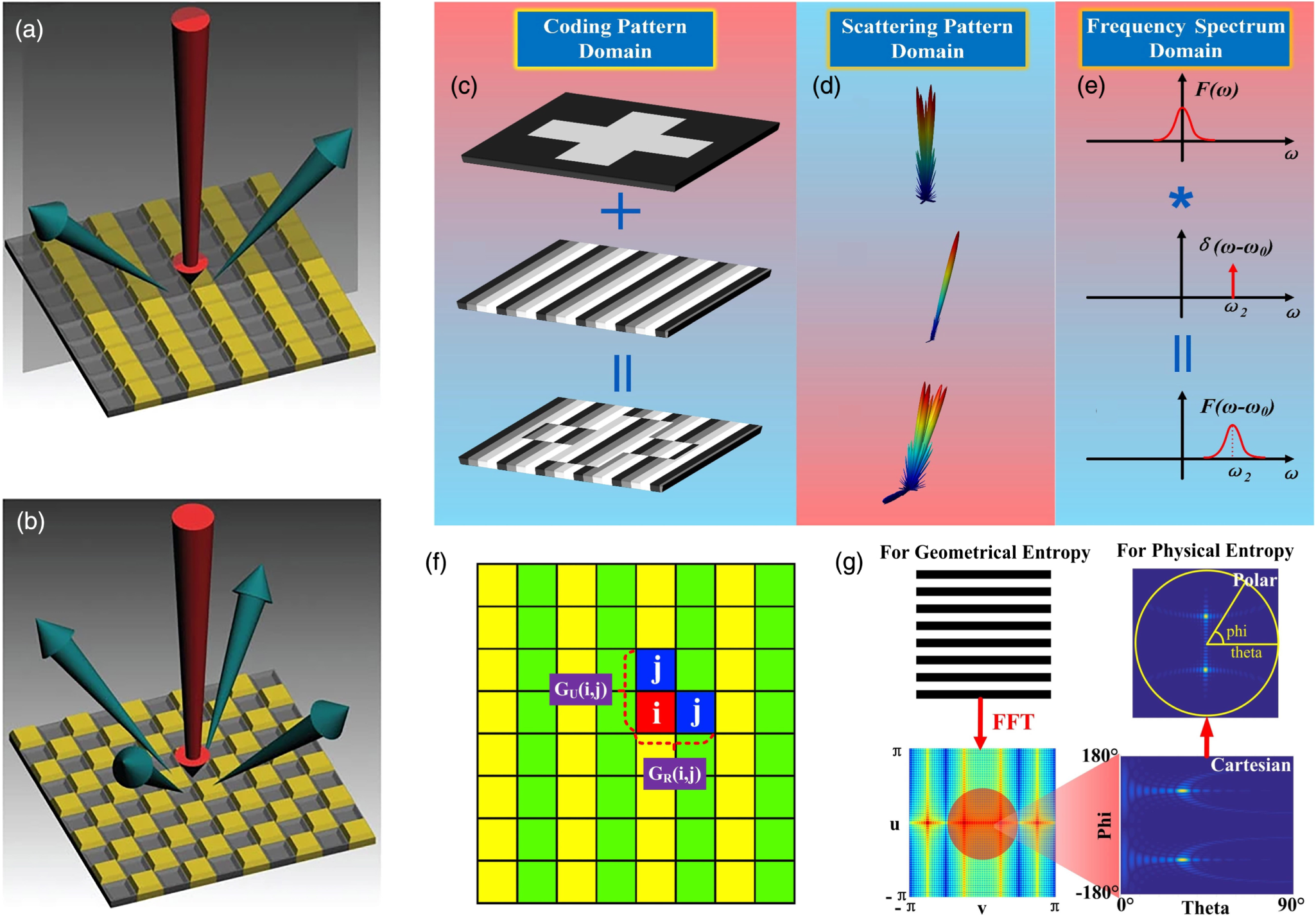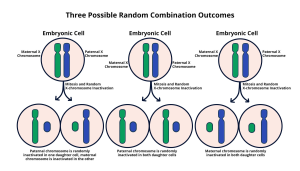Metasurfaces: Revolutionizing Consumer Electronics by Metalenz
Metasurfaces represent a groundbreaking advancement in light-focusing technology, transforming the way we perceive and interact with optics. These innovative devices, which manipulate light through intricate nanoscale structures, offer a compact solution for various applications in consumer electronics. Rob Devlin, CEO of Metalenz, has emerged as a pioneer in this field, spearheading the production of millions of mini-lenses that are now integral components in devices like the Samsung Galaxy S23 Ultra and Google’s Pixel 8 Pro. The versatility of Metalenz metasurfaces extends beyond conventional lenses, promising to enhance functionalities with reduced costs and size. As this technology continues to evolve, the implications for polarization technology and beyond could redefine numerous industries.
Often referred to as optical metasurfaces, these advanced materials utilize nanoscale patterns to control the properties of light, offering revolutionary possibilities for imaging and sensing applications. The development of miniaturized lens systems by companies like Metalenz has disrupted traditional optical designs, paving the way for more efficient and cost-effective solutions in the market. As these devices gain traction, they signify a shift away from bulkier glass lenses towards more versatile and adaptable light management systems. The intersection of engineering and photonics in these technologies not only enhances device performance but also opens doorways to innovative functionalities across various sectors. Engaging with concepts such as light manipulation and nanoscale engineering, the future of optical devices appears limitless as we explore the capabilities of these cutting-edge metasurfaces.
The Evolution of Mini-Lenses and Metalenz Metasurfaces
The development of mini-lenses and their commercialization represents a significant leap in optical technology. Originally conceived in the Capasso lab at Harvard, these light-focusing metasurfaces redefine how optical devices are produced and used. Unlike traditional lenses made of glass or plastic, which can be bulky and expensive, mini-lenses leverage microfabrication techniques developed for semiconductor manufacturing. This transformation allows for the integration of hundreds of miniature lenses on a single chip, making devices thinner, lighter, and more efficient.
Rob Devlin’s journey from researcher to CEO illustrates the potential of academic innovations to revolutionize entire industries. Under his leadership, Metalenz has not only produced millions of metasurfaces but has also positioned itself as a leader in light-focusing technology. The company’s capability to scale production using existing semiconductor fabrication facilities underscores the practicality of these mini-lenses in applications ranging from consumer electronics to advanced imaging systems.
The Technological Breakthrough of Light-Focusing Technology
Light-focusing technology derived from the research on metasurfaces is advancing the capabilities of consumer devices at an unprecedented pace. Metalenz’s innovations are not just incremental improvements—they offer radical shifts in how light is manipulated at the nanoscale. The ultrathin devices developed by Devlin and his team are designed to achieve precise control over light propagation, allowing for new functionalities in smartphones and tablets. By dramatically reducing the size and cost of optical components, the mini-lenses facilitate more compact designs and enable the integration of complex features directly into each device without sacrificing performance.
Moreover, the ability to create efficient light-focusing devices paves the way for applications in augmented reality, facial recognition, and advanced sensor technologies. As the demand for smart devices increases, so does the need for technologies that offer enhanced performance while minimizing physical space. Utilizing light-focusing technology can lead to further advancements in image processing and detection capabilities, allowing for a seamless integration of functionality and style.
Transforming Consumer Electronics with Metalenz
Consumer electronics are undergoing a significant transformation, thanks in large part to innovations from companies like Metalenz. Their metasurfaces have found applications in popular devices such as Apple’s iPad and Samsung’s Galaxy smartphones. The mini-lenses contribute to a sleeker design while also improving the optical performance of cameras, essential for high-quality image capture and augmented reality functionalities. This shift represents a movement away from bulky optics, ushering in a new era of integrated technology that prioritizes simplicity and efficiency.
As consumers demand more from their devices, manufacturers are turning to Metalenz’s groundbreaking solutions as reliable responses to these requirements. The company’s innovations not only facilitate enhanced optical capabilities but also drive down production costs, making advanced technology accessible across a broader market. With more electronics manufacturers adopting these light-focusing metasurfaces, the landscape of consumer technology will continue to evolve, creating opportunities for richer user experiences.
Polarization Technology: A Game Changer for Security
Polarization technology is emerging as a critical component in enhancing security features within consumer electronics. Metalenz’s Polar ID represents a significant advancement, offering a compact solution for identification that leverages the unique polarization signatures inherent to individual users. This technology underscores the importance of personalization in device security, transitioning from traditional biometric methods, which often require larger and more complex setups.
Devlin explains that a conventional polarization camera can be cumbersome and costly, making it impractical for widespread use. However, by employing Metalenz’s metasurfaces, devices can achieve the same functionalities at a fraction of the size and cost. This innovation not only enhances security but also opens the door for broader applications in health monitoring and environmental assessment by utilizing polarization signatures in biological materials and pollutants.
The Importance of Collaboration in Optical Advances
The successful commercialization of Metalenz’s technologies can be attributed to a robust collaborative environment fostered by the team at Harvard. The blending of different scientific disciplines has led to a fertile ground for innovative ideas and groundbreaking research. As stated by Sam Liss, the director of strategic partnerships at Harvard’s Office of Technology Development, this cross-disciplinary approach has proven vital in emerging technologies, showing the immense potential arising from shared knowledge and diverse expertise.
Collaboration does not stop at academic institutions; ongoing partnerships between startups like Metalenz and established companies further catalyze innovation. By working together, they can leverage existing market channels while introducing new technologies that challenge the status quo. Such collaborations ensure that revolutionary products, like the mini-lenses and their related technologies, continue to evolve and meet the needs of consumers effectively.
The Future of Metasurfaces in Technological Innovation
Looking ahead, the potential for metasurfaces and mini-lens technology in various industries is vast. Rob Devlin and his team at Metalenz are not merely resting on their successes; they are keen on exploring new functionalities that could arise from further applications of light-focusing technology. With the capability of constructing complex optical systems on a nanoscale, possibilities extend far beyond current consumer electronics.
The rising demand for improved imaging, sensing, and display technologies makes metasurfaces invaluable. As research and development continue, we may witness these innovations resulting in applications that we can hardly imagine today. The fusion of computer science, optics, and material science will likely pave the way for next-generation products that redefine how we interact with technology.
Market Trends in Light-Focusing Technology Solutions
As the tech industry evolves, the market trends surrounding light-focusing technologies like those produced by Metalenz indicate a robust growth trajectory. Businesses are increasingly investing in compact, efficient optical solutions to enhance performance and reduce manufacturing costs across various devices. The integration of metalens technologies into smartphones and cameras not only meets consumer demand for better quality but also addresses the challenges of size and resource allocation in production.
Market analysts have noted that the adoption of metasurfaces is a direct response to the growing need for miniaturization in electronic devices. With capabilities for mass production in semiconductor facilities—alongside the benefits of reduced costs—companies are keen to capitalize on this emerging trend. This shift towards smaller optics signifies a fundamental change in consumer electronics, promising innovation that prioritizes both functionality and user experience.
Challenges and Competition in the Metasurface Industry
While the journey of Metalenz illustrates success, it is essential to recognize the competitive landscape of the metasurface industry. As more companies recognize the potential of light-focusing technology, many are eager to innovate and introduce similar products to the market. The pressure to maintain a lead over competitors necessitates continuous innovation and improvement of existing technologies, ensuring that Metalenz remains at the forefront of optical advancements.
Navigating this landscape requires agility and foresight. Companies must invest strategically in research and development to stay ahead of trends while also anticipating market needs. With competitors rapidly emerging, the ability to adapt and leverage existing collaborations will play a crucial role in maintaining competitive advantages in the increasingly crowded metasurface space.
Adoption of Mini-Lenses in Future Standards
The integration of mini-lenses into future electronics standards could reshape design philosophies across various industries. As device manufacturers look to integrate more functionalities into smaller frameworks, the efficiency offered by metasurfaces will likely become a cornerstone of modern design. This transition to adopting mini-lens technology is not merely a trend; it signals a broader acceptance of how optical components can evolve to meet skyrocketing performance requirements.
Envisioning a future where every device employs these small and efficient lenses is not far-fetched. Their capabilities for enhancing imaging and sensing open up numerous applications beyond traditional electronics, including automotive, medical, and environmental fields. As such, the widespread adoption of mini-lenses may soon become standardized, fundamentally altering manufacturing processes and consumer expectations in the tech landscape.
Frequently Asked Questions
What are metasurfaces and how do they relate to mini-lenses?
Metasurfaces are engineered surfaces comprised of tiny structures that manipulate light in unprecedented ways, unlike traditional lenses. They can achieve functions such as focusing light, similar to mini-lenses, but on a microscopic scale, which allows manufacturers to create thinner, lighter optical devices.
How are Metalenz metasurfaces revolutionizing consumer electronics?
Metalenz metasurfaces are transforming consumer electronics by replacing bulky traditional lenses with compact, cost-effective light-focusing technology. This innovation allows for sleeker designs in devices like smartphones and tablets, enhancing performance while reducing production costs.
What role does light-focusing technology play in modern optics?
Light-focusing technology, such as that developed by Metalenz, plays a crucial role in modern optics by enabling the design of ultra-thin devices that can perform complex optical functions. These innovations lead to improved imaging and sensing capabilities in various fields, including augmented reality and facial recognition.
How does polarization technology enhance the functionality of devices using metasurfaces?
Polarization technology enhances metasurfaces by adding capabilities like depth perception and unique identification signatures, making it ideal for applications in security systems, medical diagnostics, and environmental monitoring, thereby broadening the scope of device functionalities.
What are the future applications of Metalenz’s polarization metasurfaces?
Future applications of Metalenz’s polarization metasurfaces include enhancing security in consumer electronics, improving medical imaging techniques for early disease detection, and optimizing air quality monitoring systems, showcasing the versatility and potential of this technology.
How can I expect metasurfaces to impact the design of future optical devices?
Metasurfaces are expected to significantly impact the design of future optical devices by enabling miniaturization and integration of multiple optical functions into a single component, thus fostering innovation in mobile technology, wearables, and smart devices.
Who developed the original concept of metasurfaces and what was their significance?
The original concept of metasurfaces was developed by Federico Capasso and his lab at Harvard. Their work laid the foundation for creating devices that manipulate light at the nanoscale, which has implications for various applications, from consumer electronics to advanced optical systems.
Why are Metalenz metasurfaces considered a disruption in traditional optics?
Metalenz metasurfaces are considered a disruption because they replace the conventional method of manufacturing curved glass lenses with a flat, wafer-thin design that can be mass-produced, reducing both size and cost while improving functionality in modern devices.
| Key Point | Description |
|---|---|
| Rob Devlin’s Role | Rob Devlin, a graduate student at Harvard, developed a mini-lens that bends light using tiny pillars on a wafer. |
| Metalenz Startup | Founded in 2016 to commercialize Devlin’s mini-lens technology, producing millions of metasurfaces for consumer electronics. |
| Mass Production | The mini-lenses are mass-produced in semiconductor foundries, meeting high demand. |
| Applications | Used in devices like iPad, Samsung Galaxy S23 Ultra, and Google Pixel 8 Pro, highlighting the technology’s broad adoption. |
| Disruption of Conventional Optics | Capasso and Devlin’s work is disrupting traditional lens manufacturing, making devices smaller and more efficient. |
| Polar ID Development | Next-generation technology using polarization for improved security and reduced costs in cameras. |
| Future Prospects | Potential applications include skin cancer detection and air quality monitoring through unique polarization signatures. |
Summary
Metasurfaces represent a groundbreaking advancement in optics and imaging technology, as demonstrated by the work of Rob Devlin and the startup Metalenz. These innovative devices leverage nanoscale structures to manipulate light, offering smaller, cheaper alternatives to traditional lenses while enabling new functionalities in consumer electronics and beyond. With ongoing research and development, the future of metasurfaces holds promise for revolutionary applications that extend well into various sectors, including security and healthcare.



